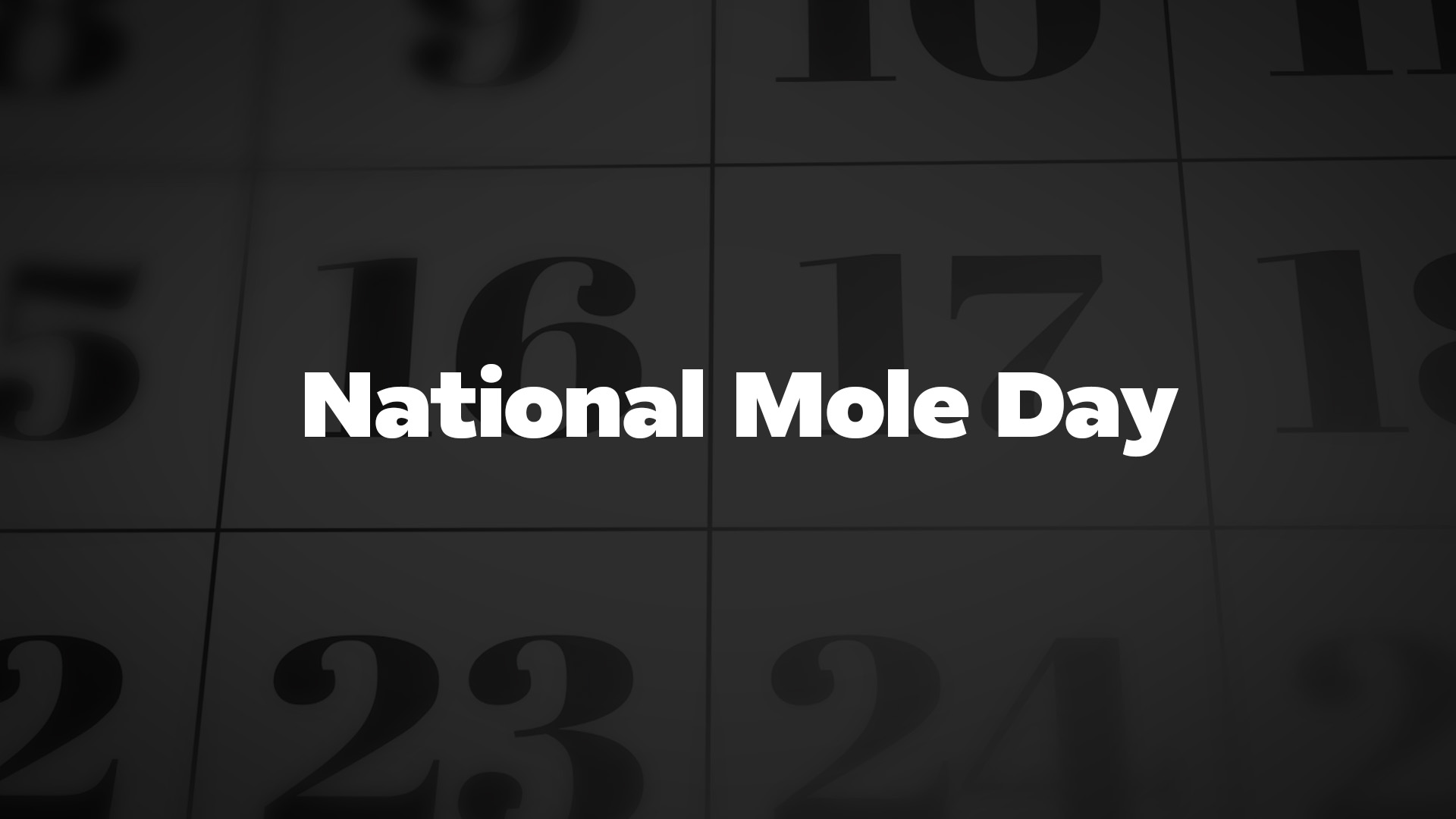National Mole Day celebrates Avogadro’s Number, a basic unit of measurement used in chemistry, represented by the symbol “mol.” The day encourages people to learn more about chemistry and to appreciate the contributions of scientists to the world.
#HASHTAGS
#NationalMoleDay
National Mole Day is celebrated annually on October 23rd
| Year | Date | Day |
|---|---|---|
| 2022 | October 23 | Sunday |
| 2023 | October 23 | Monday |
| 2024 | October 23 | Wednesday |
| 2025 | October 23 | Thursday |
| 2026 | October 23 | Friday |
| 2027 | October 23 | Saturday |
| 2028 | October 23 | Monday |
| 2029 | October 23 | Tuesday |
| 2030 | October 23 | Wednesday |
| 2031 | October 23 | Thursday |
| 2032 | October 23 | Saturday |
| 2033 | October 23 | Sunday |
| 2034 | October 23 | Monday |
| 2035 | October 23 | Tuesday |
